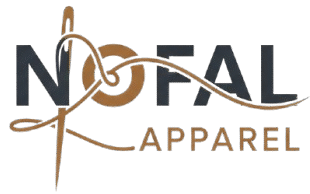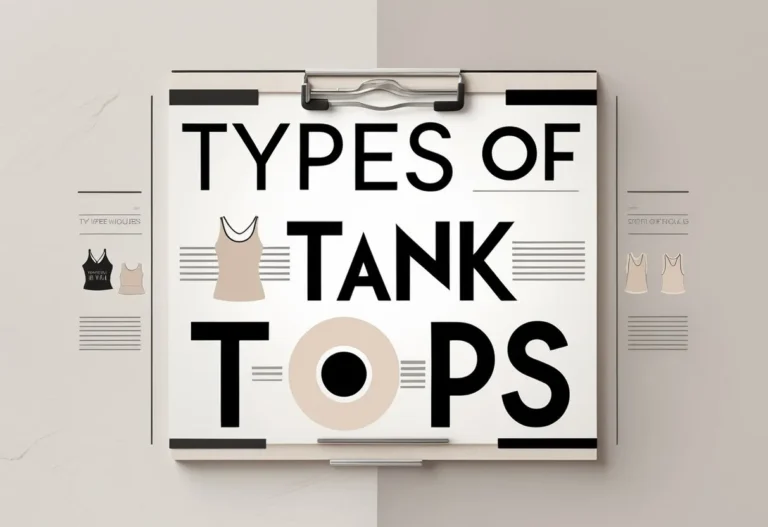Viscose is a fabric made from natural wood pulp that is chemically processed to create a soft, silk-like material. It offers a balance between natural and synthetic qualities, making it a popular choice for affordable, breathable clothing with a smooth texture. Its ability to mimic silk’s look and feel has made it widely used in both fashion and home textiles.
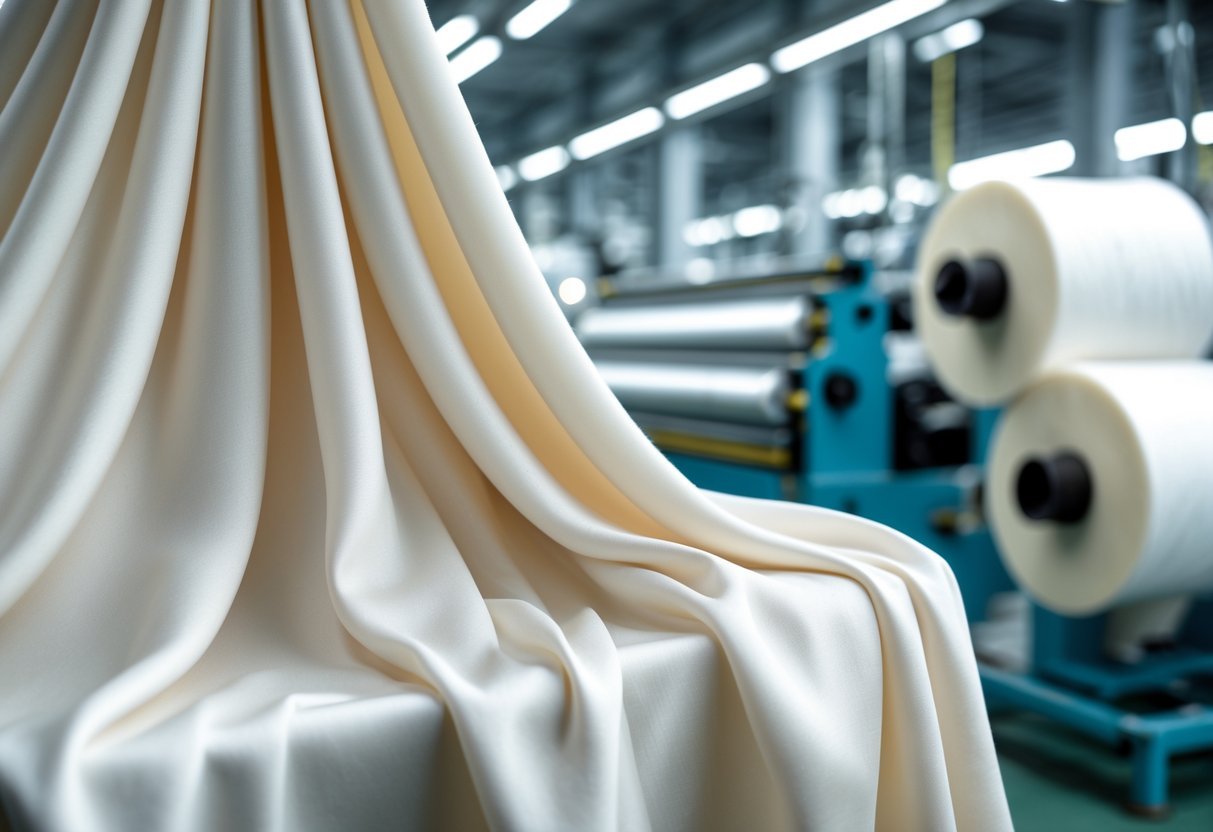
The process to make viscose involves several steps, including treating wood pulp with chemicals to transform it into fibers that can be spun into yarn. This multi-stage manufacturing is important because it affects the fabric’s quality and environmental impact. Recent efforts focus on making this process more eco-friendly while maintaining the fabric’s desirable features.
Viscose is known for its versatility, found in many types of clothing like dresses, blouses, and even home items. While it has some care challenges such as wrinkling and shrinking, its combination of comfort and affordability keeps it relevant in today’s textile market.
Key Takeaways
- Viscose is made from chemically processed wood pulp, giving it a silk-like feel.
- Its production involves several chemical steps aimed at transforming natural materials into fabric.
- The fabric is versatile and widely used but comes with care and environmental considerations.
What Is Viscose Fabric?
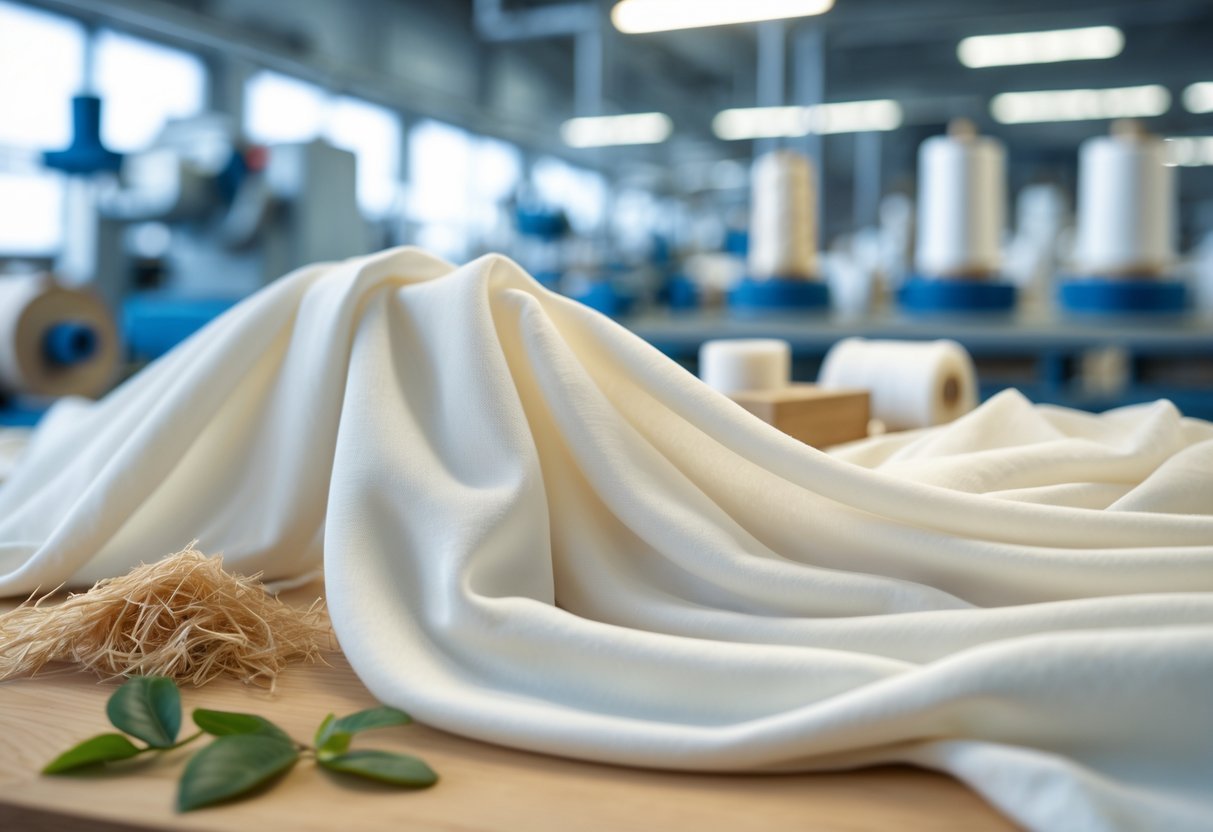
Viscose fabric is a semi-synthetic material made from natural sources like wood pulp. It offers a smooth, soft texture similar to silk but is more affordable. Its production involves chemical processing that turns raw cellulose into fibers used widely in clothing and textiles. Viscose’s history, characteristics, and role in the industry show its unique place between natural and synthetic fabrics.
Origins and History of Viscose
Viscose was developed in the late 1800s as a new fiber option. Inventors Charles Frederick Cross, Edward John Bevan, and Clayton Beadle patented the process in 1892. The goal was to create a fabric resembling silk but easier and less costly to produce.
Early production involved treating wood pulp with chemicals to extract cellulose. Over time, technology improved viscose’s strength and texture. Initially, it was cheaper than natural silk, making silk-like fabrics accessible to more people.
Viscose played a big role in early 20th-century textiles. It helped the fashion industry grow by offering an affordable, elegant fabric alternative. Today, improved methods aim to reduce environmental impacts while keeping viscose popular.
Viscose as Artificial Silk
Viscose is often called artificial silk because of its silky look and feel. It has a soft sheen and drapes smoothly, similar to real silk, but is easier to care for and less expensive.
The fiber’s silk-like appearance comes from its cellulose origin. The fabric absorbs dyes well, allowing bright, rich colors that last through washing. Viscose feels breathable and comfortable on the skin, making it suitable for warm weather clothes.
Despite being “artificial,” viscose is derived from natural materials. This sets it apart from fully synthetic fabrics like polyester. However, the processing uses chemicals that impact the environment, so advances focus on cleaner production.
Viscose in the Textile Industry
Viscose fabric holds an important place in fashion and textiles. It is used for dresses, blouses, skirts, and other garments where softness and drape matter.
Its versatility allows it to blend with other fibers, improving texture and strength. Designers value it for producing fabrics that look high-end but remain affordable. Aside from clothing, viscose finds use in home textiles like curtains and upholstery.
The industry continues to refine viscose production to address sustainability. New methods reduce harmful chemical use and improve recycling. Despite challenges, viscose remains a favored option for combining look, feel, and cost in fabrics worldwide.
How Viscose Is Made: From Raw Material to Fabric
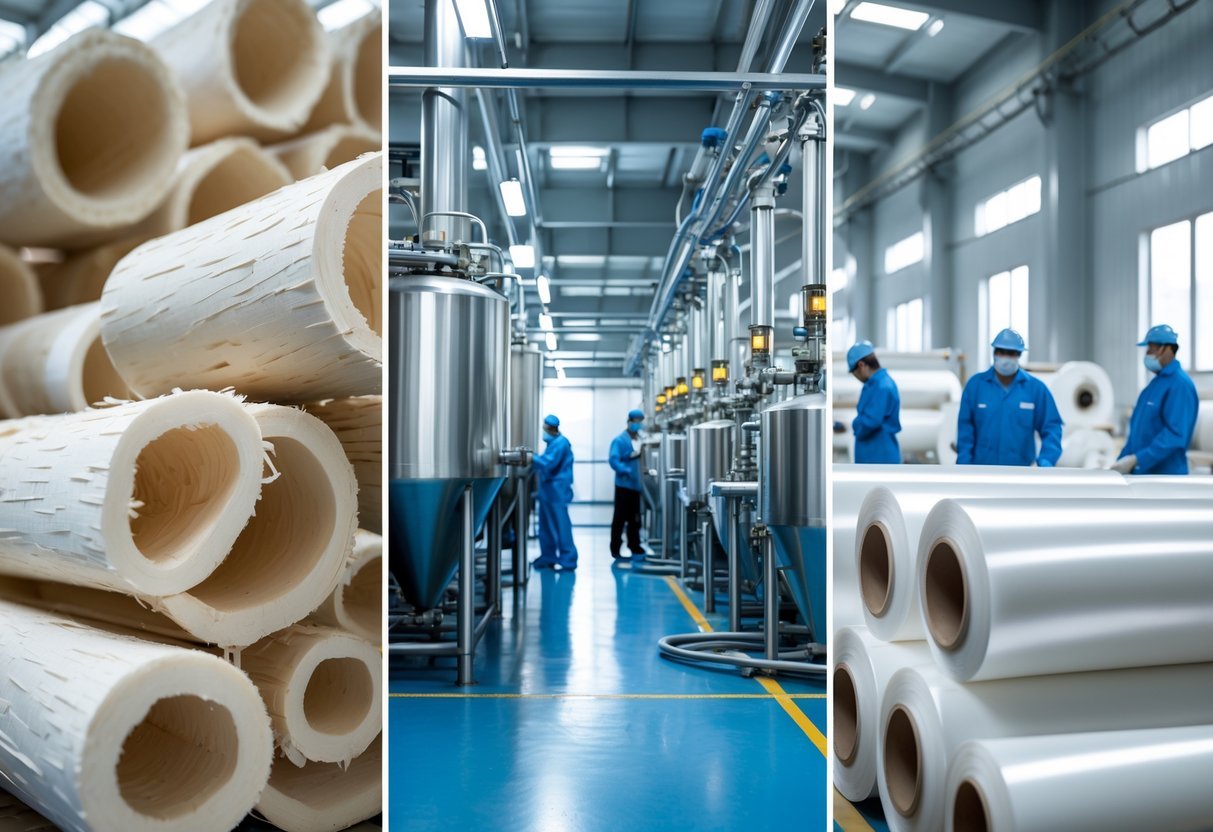
Viscose production begins with extracting cellulose from wood pulp. This cellulose is then chemically treated to make a viscous solution. Finally, the solution is spun into fibers that become fabric. The process uses several important chemicals to turn wood into soft, breathable material.
Cellulose Extraction from Wood Pulp
Viscose starts with cellulose taken from wood pulp. Common wood sources include eucalyptus trees and beech trees. The wood is first chipped and then processed to remove lignin and other impurities. This leaves purified cellulose sheets.
These sheets are treated with sodium hydroxide (also called caustic soda) to create alkali cellulose. The alkali cellulose is pressed and broken into small crumbs to increase surface area. These crumbs are aged under controlled oxygen levels to lower molecular weight, which is key for smooth fiber formation.
The Viscose Production Process
The aged crumbs are mixed with carbon disulfide, forming cellulose xanthate. This turns the cellulose into a thick, yellowish liquid known as viscose. The viscose is then filtered and degassed multiple times to remove impurities and air bubbles.
Next, the viscose solution moves through spinnerets—small holes that shape it into thin filaments. These filaments enter a spin bath containing sulfuric acid and salts like sodium sulfate. This bath causes the cellulose xanthate to break down, regenerating cellulose fibers from the solution.
The fibers are then washed to remove leftover chemicals, cut to the needed length, and dried. This gives soft, flexible fibers ready for weaving into fabric.
The Role of Chemicals in Viscose Production
Several chemicals are essential in this process. Sodium hydroxide helps to break down wood pulp into alkali cellulose. Carbon disulfide reacts with the alkali cellulose to form cellulose xanthate, the key intermediate in viscose making.
Sulfuric acid in the spin bath causes the fibers to solidify from the viscose solution. Sodium sulfate and zinc sulfate improve coagulation and help link cellulose molecules.
Carbon disulfide is toxic, raising safety and environmental concerns. Newer production methods aim to recycle chemicals and reduce harmful emissions to make viscose manufacturing safer and cleaner.
Types and Variants of Viscose
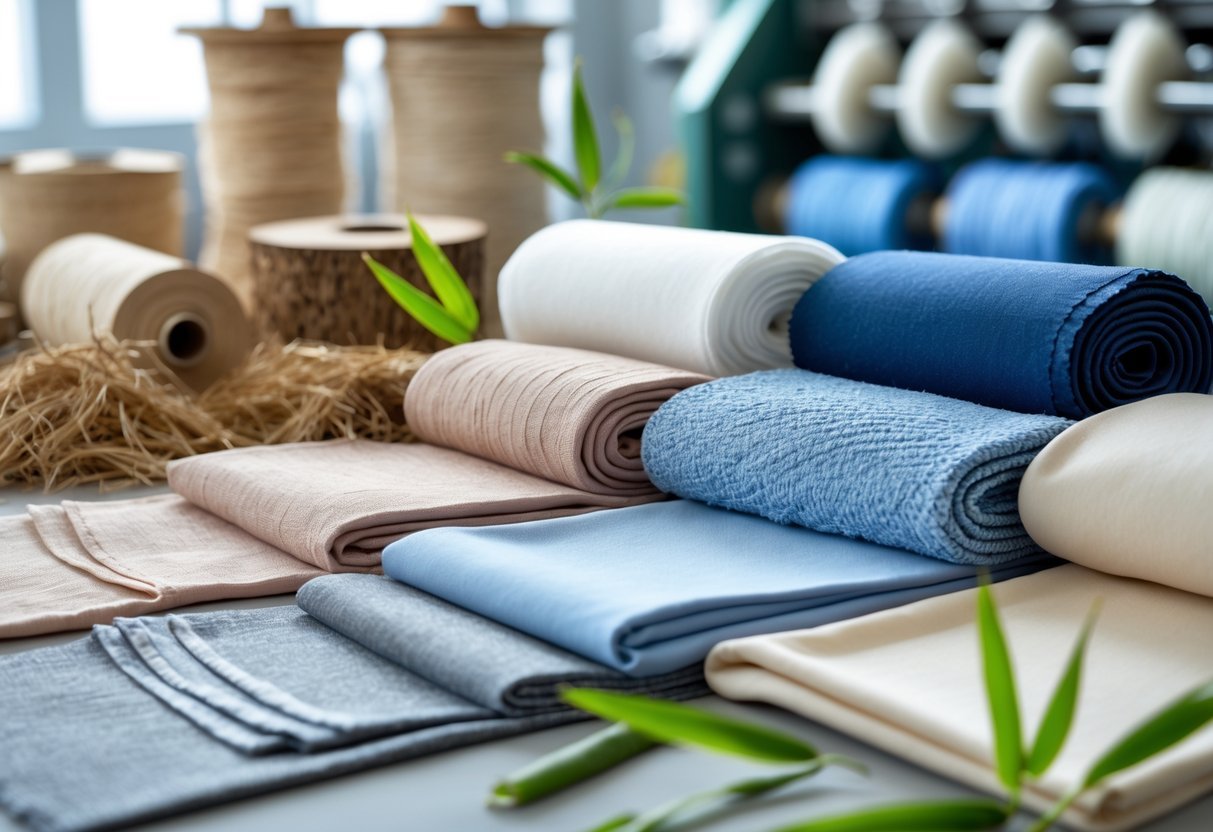
Viscose fabric comes in several forms, each with unique qualities suited for different uses. These types differ in production methods, durability, texture, and sustainability. Understanding these variants helps in choosing the right fabric for specific needs like comfort, appearance, and environmental impact.
Standard Viscose
Standard viscose is a semi-synthetic fabric made primarily from wood pulp. It undergoes chemical processing to change natural cellulose into fibers suitable for textile use. It has a soft feel and smooth texture, often compared to silk or cotton.
This variant is breathable and moisture-absorbent, making it comfortable to wear in warm conditions. However, it can wrinkle easily and may lose strength when wet. Standard viscose is widely used in dresses, blouses, and linings. It is affordable but involves chemical treatments that raise environmental concerns.
Modal and Modal Viscose
Modal is a type of viscose that is stronger and more durable than standard viscose. It is made from beech tree cellulose and processed to yield a fabric that holds shape well and resists shrinking. Modal viscose feels soft and silky.
Because of its resilience, modal is common in underwear, activewear, and casual clothing. It offers better wet strength and drapes smoothly. Modal viscose is also less prone to pilling compared to standard viscose. It generally has a higher production cost but provides improved longevity and comfort.
Lyocell and Tencel
Lyocell is an advanced viscose variant produced with a closed-loop process that recycles almost all chemicals used. This method cuts down on environmental harm significantly. Tencel is a brand of lyocell known for its high quality and sustainability.
Lyocell and Tencel fabrics are strong, breathable, and absorbent. They maintain shape and softness even after multiple washes. These materials are often used in eco-friendly clothing lines and athleisure wear. They are considered more sustainable than other viscose types due to less chemical waste and water use during production.
Bamboo Viscose
Bamboo viscose is made by turning bamboo plant cellulose into fabric through a chemical process similar to standard viscose. It is soft, breathable, and has natural antibacterial properties. Bamboo viscose is popular in bedding, towels, and comfortable clothing.
Like other viscose fabrics, bamboo viscose absorbs moisture well but may weaken when wet. Despite being derived from bamboo, the chemical process can impact the environment. Some newer bamboo viscose types pursue better environmental standards through improved manufacturing techniques.
Properties and Characteristics of Viscose
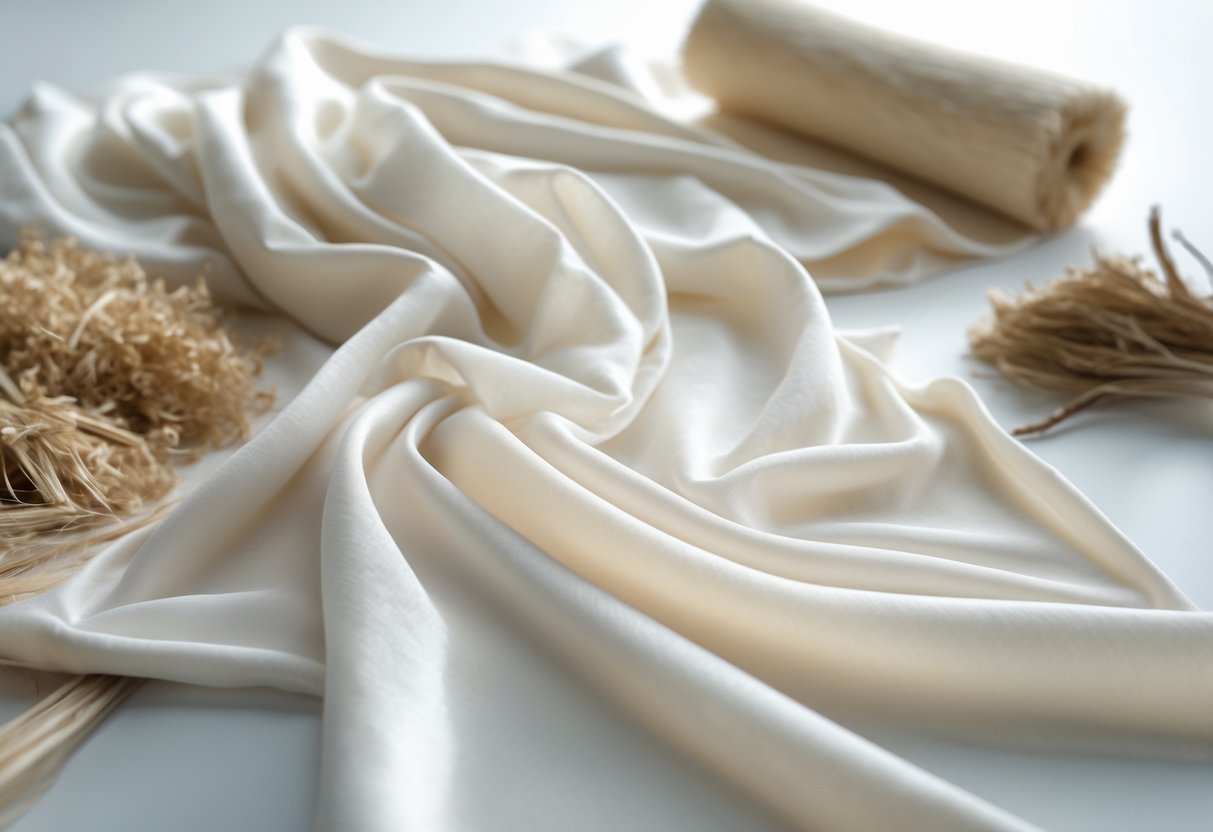
Viscose fabric combines qualities from both natural and synthetic fibers, resulting in a material with a unique feel, look, and performance. It offers softness and shine similar to silk, breathes well, and handles moisture efficiently. However, it also has limits in durability and care requirements that affect how it performs over time.
Texture, Drape, and Appearance
Viscose fibers feel soft and smooth, often compared to silk for their silky texture. Its finish is lustrous but less shiny than pure silk. Viscose fabric drapes fluidly, making it ideal for flowing garments like tunics and dresses.
The fabric’s softness and smoothness allow it to mimic high-end natural fibers, while its drape enhances garment fit and comfort. Unlike stiff textiles, viscose moves with the body. This makes it popular in fashion where elegance and comfort matter.
Breathability and Moisture Absorption
One of viscose’s key strengths is its breathability. It allows air to pass through easily, which helps keep the wearer cool. Additionally, viscose fibers absorb moisture well, pulling sweat away from the skin to aid in drying.
This moisture absorbent property is similar to natural fibers like cotton but offers a cooler feel compared to heavier materials. Because it breathes effectively, viscose suits warm weather and active conditions where comfort is important.
Wrinkles, Durability, and Care
Viscose tends to wrinkle easily due to the softness and flexibility of its fibers. This means garments often need careful ironing after washing to maintain a smooth look. Viscose also shrinks when exposed to heat and moisture, so gentle washing is advised.
Compared to cotton or synthetic fibers like polyester, viscose is less durable. The fibers can weaken with repeated washing or wear. Blending viscose with other materials can improve strength and reduce shrinkage, but pure viscose needs careful handling to last.
Color and Dye Affinity
Viscose has excellent dye affinity because it readily absorbs dyes, resulting in bright, vivid colors. Its fibers hold dye well, allowing for long-lasting color vibrancy in clothing and textiles.
This easy-to-dye quality makes viscose versatile for fashion and home textiles where color variety is desired. The fabric’s ability to showcase sharp hues and patterns adds to its appeal as an affordable alternative to silk, which can be harder and more expensive to dye.
Applications and Uses of Viscose
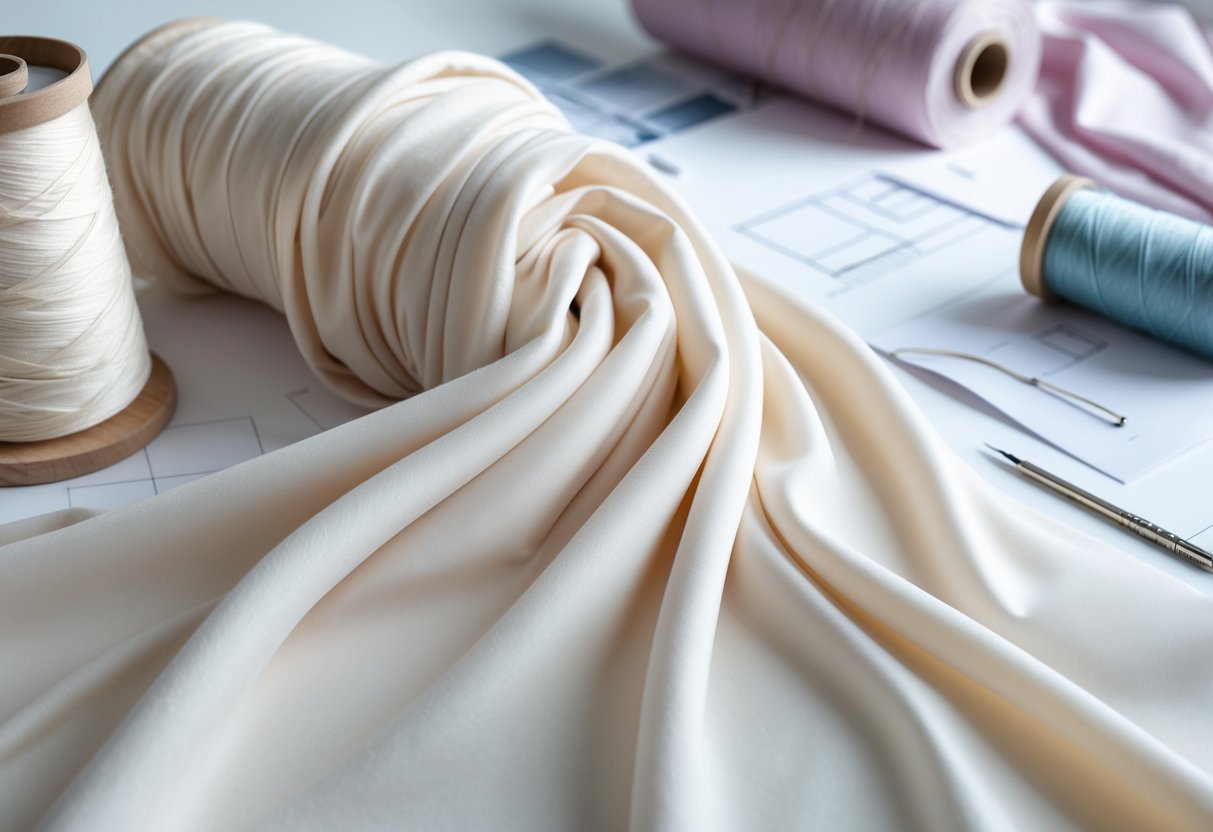
Viscose fabric serves many purposes because of its softness, breathability, and ability to mimic natural fibers like silk. It is common in both fashion and home textiles, showing versatility through various blends and weaves suited to specific functions.
Viscose in Clothing and Fashion
Viscose is popular in making dresses, blouses, skirts, and formal wear thanks to its smooth texture and flow. It drapes well, giving garments a polished look, especially when woven as viscose satin.
Viscose jersey, a stretchier form, is often used in activewear and loungewear because it balances comfort and breathability. Its moisture-absorbing ability helps keep the wearer cool.
Fashion designers value viscose because it offers a silk-like feel at a lower cost. It also dyes well, allowing a wide range of colors and patterns. Viscose clothing blends natural softness with affordability.
Home Textiles and Upholstery
Viscose fibers are common in home textiles such as curtains, bed linens, and towels. The fabric’s breathability adds comfort, and its ability to absorb dyes helps create vibrant household decor.
In upholstery, viscose blends add softness and shine to furniture coverings. Its silky texture enhances visual appeal, but blends with stronger fibers prevent quick wear.
Home items made of viscose balance elegance and function, fitting well in many interior design styles. Its versatility allows it to appear in both casual and formal home settings.
Popular Viscose Blends and Weaves
Viscose is often blended with cotton, polyester, or wool to improve durability and reduce wrinkling. These blends maintain viscose’s softness while adding strength.
Common weaves include satin, known for its smooth, glossy surface, and jersey, which is stretchier and used for casual wear. Each weave gives fabric different properties suited to specific uses.
Blends and weaves allow manufacturers to tailor viscose fabrics for everything from soft loungewear to elegant clothing and functional upholstery. This adaptability keeps viscose relevant across many industries.
Sustainability and Environmental Considerations
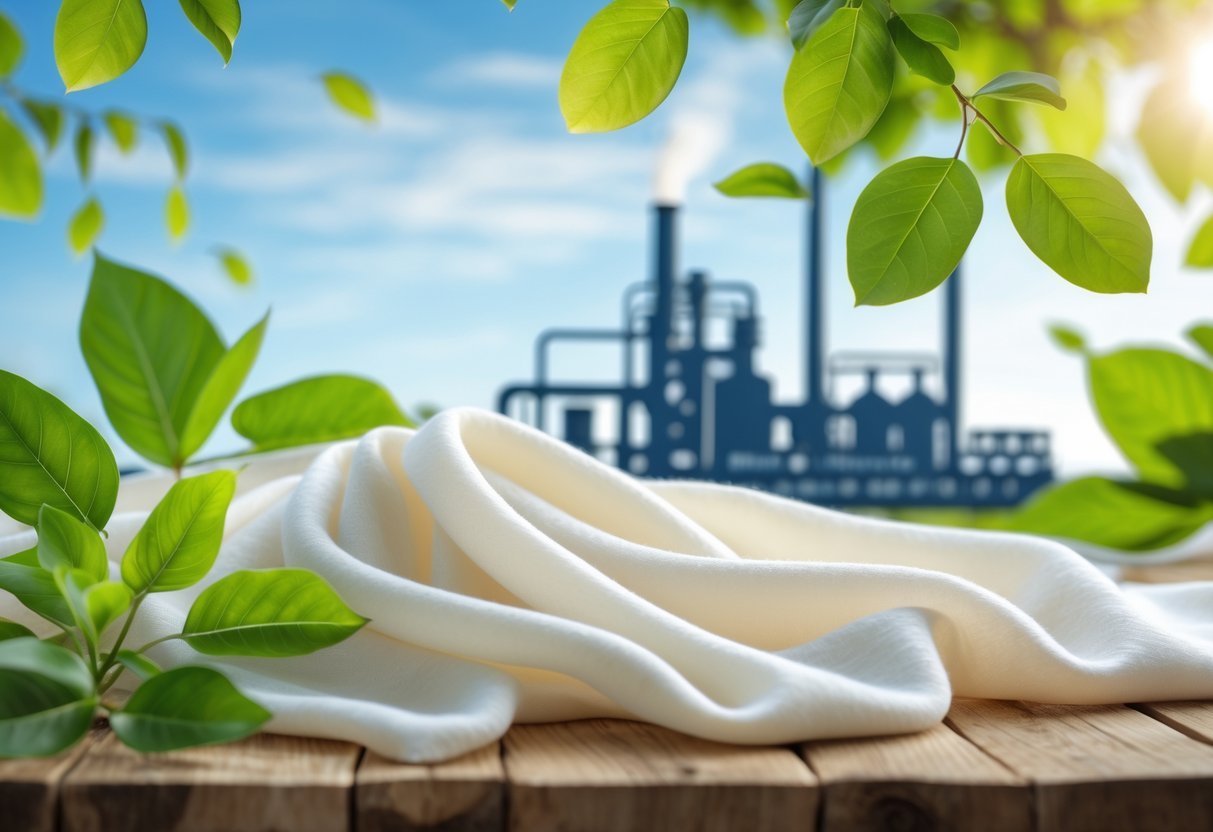
Viscose production involves both positive and negative environmental factors. It starts with sourcing raw materials and includes chemical use in manufacturing. Efforts to reduce harm focus on better forestry practices and cleaner production methods. Alternatives to traditional viscose aim to improve sustainability in the textile industry.
Deforestation and Sourcing Cellulose
Viscose is made from cellulose, mostly from wood pulp. Sustainable sourcing means using wood from responsibly managed forests to avoid deforestation. Unsustainable harvesting can lead to loss of biodiversity and damage ecosystems.
Forest Stewardship Council (FSC) certification helps ensure cellulose comes from well-managed forests. Some producers use fast-growing trees like eucalyptus or bamboo to reduce pressure on old-growth forests. However, poor regulation in some regions can lead to illegal logging.
Sourcing sustainable cellulose is key to reducing the environmental footprint of viscose. It is a renewable resource, but careful management is required to maintain forest health and prevent over-exploitation.
Chemical Impact and Closed-Loop Systems
Viscose production uses chemicals like sodium hydroxide and carbon disulfide to turn wood pulp into fiber. These chemicals can harm the environment and workers if not managed properly. Water pollution and air emissions are common concerns in traditional viscose manufacturing.
Closed-loop systems aim to recycle chemicals and water during production, drastically cutting pollution. They capture and reuse hazardous substances, reducing environmental release and improving worker safety.
Factories with closed-loop systems represent a shift toward sustainable viscose. This technology lowers chemical waste and conserves water, making the production process cleaner compared to older methods.
Sustainable Viscose Alternatives
New fibers like modal and lyocell are developed as more sustainable versions of viscose. These alternatives use similar plant-based cellulose but require fewer harmful chemicals and often employ closed-loop processes.
Lyocell production uses non-toxic solvents and recycles most chemicals, resulting in less pollution. Modal is made from beech trees with improved processing to reduce environmental damage.
Brands that focus on sustainable viscose choose certified materials and promote eco-friendly production. These efforts aim to align viscose use with growing demand for environmentally responsible textiles over synthetic fabrics, which rely on fossil fuels.
Viscose Compared to Other Fabrrics
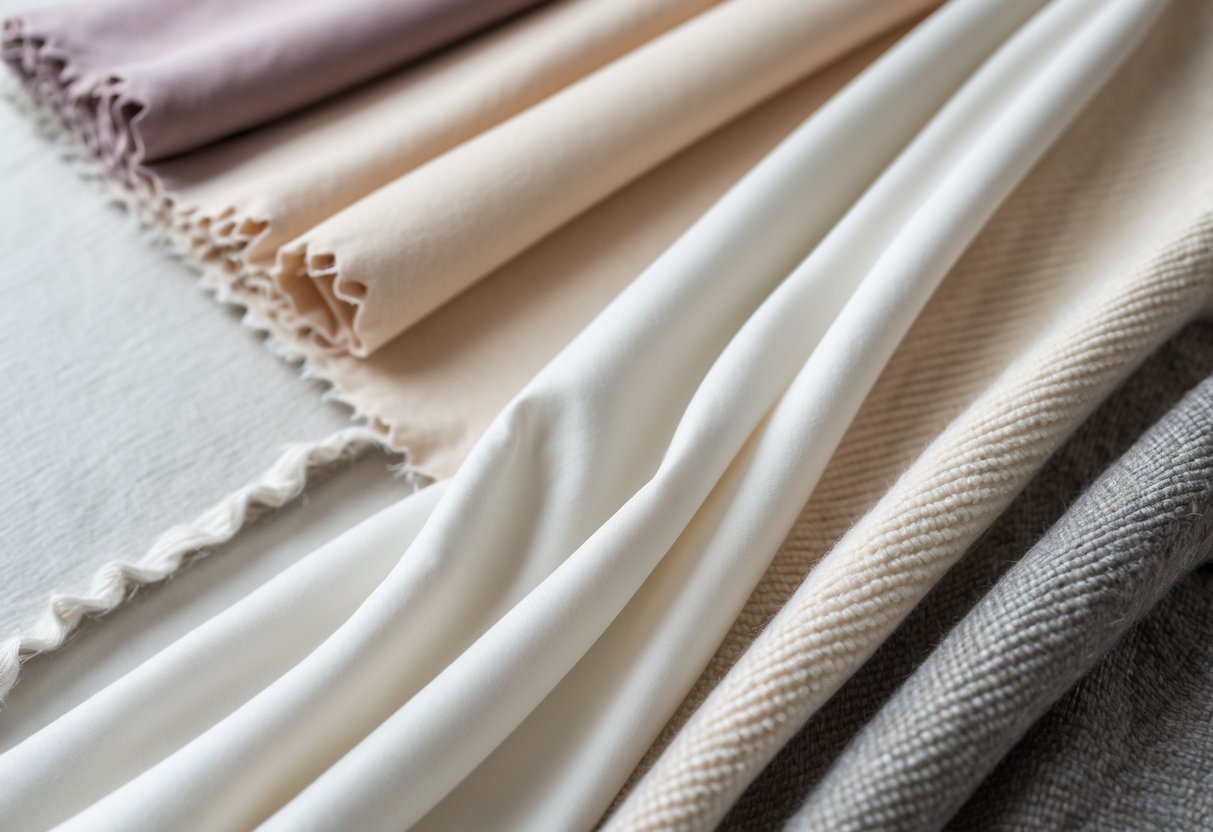
Viscose shares qualities with both synthetic and natural fabrics, which affects its use and care. It balances softness and breathability but has differences in strength, durability, and eco-friendliness when compared to polyester, natural fibers, and other rayon types. These differences help decide which fabric fits specific needs.
Viscose vs. Polyester
Viscose is a semi-synthetic fabric made from natural wood pulp but processed with chemicals. It feels soft and breathable like natural fibers. Polyester, a fully synthetic fabric, is stronger and more durable. Polyester does not absorb moisture well, so it can feel uncomfortable in hot weather. Viscose absorbs moisture and allows better air flow, which suits warm climates.
Polyester requires less special care and resists wrinkles, making it easier to clean and maintain. Viscose needs gentle washing to avoid shrinking or losing shape. In summary:
- Viscose: Soft, breathable, moisture-absorbing, less durable
- Polyester: Strong, moisture-resistant, wrinkle-resistant, less breathable
Viscose vs. Natural Fibers
Viscose is often compared to cotton and silk because it mimics their softness and smoothness. Compared to cotton, viscose has a silkier feel and better drape. However, cotton is more durable, especially when wet, while viscose weakens and can stretch or shrink if not handled properly.
When compared to silk, viscose looks similar and costs less but is less durable. Silk is naturally self-cleaning and hypoallergenic, making it easier to maintain. Viscose requires more care to keep its silky texture.
| Feature | Viscose | Cotton | Silk |
|---|---|---|---|
| Softness | Very soft, silky | Soft, coarser | Very soft, smooth |
| Durability | Weak when wet | Strong, durable | Strong, durable |
| Care | Gentle washing | Easy to wash | Delicate care |
| Cost | Affordable | Affordable | Expensive |
Viscose vs. Other Rayon Types
Viscose is one of several types of rayon, including lyocell and bamboo rayon. Standard viscose uses a chemical-heavy process and can harm the environment. In contrast, lyocell is made with an eco-friendlier method called a closed-loop process, which recycles most chemicals.
Bamboo rayon is similar to viscose but can also be processed in a cleaner way. These newer rayons are more sustainable while keeping the softness and breathability of viscose. They generally cost more but offer better environmental benefits.
| Rayon Type | Production Impact | Softness | Environmental Status |
|---|---|---|---|
| Viscose | High chemical use | Soft | Less eco-friendly |
| Lyocell | Low chemical impact | Soft | More eco-friendly |
| Bamboo Rayon | Can vary | Soft | Potentially eco-friendly |
Frequently Asked Questions
Viscose fabric has specific environmental effects, care needs, and performance traits that affect its use. It blends natural and synthetic qualities, which shapes its pros, cons, and suitability for different climates and purposes.
What are the environmental impacts of producing viscose?
Producing viscose uses wood pulp from trees like beech, pine, or eucalyptus. The process involves chemicals such as carbon disulfide and sodium hydroxide, which can harm the environment if not managed properly. Some factories use closed-loop systems to reduce pollution, but many do not, making the process less eco-friendly.
How does viscose compare to cotton in terms of sustainability and comfort?
Viscose comes from plants like cotton but needs more chemicals to be made, which can lower its sustainability compared to cotton. In terms of comfort, both fabrics are soft and breathable. Viscose often feels smoother and silkier, while cotton is usually more durable and better at handling heat without damage.
Can viscose fabric be used throughout the year, and is it suitable for all seasons?
Viscose works well in warm weather because it breathes and absorbs moisture. It feels cool and light on the skin. When blended with materials like wool or polyester, it can also be worn in cooler seasons, offering more warmth and texture without losing its soft feel.
What are the advantages and disadvantages of using viscose fabric?
Viscose offers softness, good drape, vivid colors, and breathability. It is affordable and versatile in fashion and home textiles. However, it is weaker when wet, shrinks easily, wrinkles fast, and is sensitive to heat. It also fades and wears out faster than some other fibers.
How does viscose differ from polyester in terms of texture and usage?
Viscose is soft, smooth, and feels like silk, while polyester is more synthetic, stronger, and less breathable. Viscose is better for warm weather clothing and elegant garments. Polyester is often used where durability and moisture resistance are priorities, like sportswear and outerwear.
Are there any unique properties of viscose that distinguish it from rayon?
Viscose is a type of rayon, but it is the original and most common form. It is less durable and less eco-friendly than newer rayon types like modal or lyocell. These newer versions use better processes that make them stronger, more shrink-resistant, and more sustainable compared to traditional viscose.
